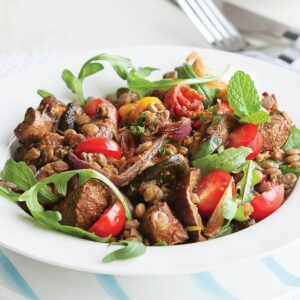
Chillies are available in stores year-round but home gardeners can pick them from January to April. Choose mild long red and green cayenne chillies or smaller red, orange, green or black Birdseye chillies, also known as dynamite chillies with intense heat. As a rule, the smaller chillies are hotter.
Buying
Choose firm fresh chilli peppers with blemish-free, shiny skins.
Storing
Chillies can be kept unrefrigerated for three to four weeks. Dry whole chillies in a cool airy place or freeze in re-sealable bags (do not thaw but use frozen).
Nutrition
Fresh chillies contain vitamin C and carotenoids, as well as capsaicin, a component which delivers their spicy pungency and is being investigated for its health benefits.
Using
Chillies add heat and colour to meat, seafood and vegetarian dishes as well as spice pastes. Larger chillies can be stuffed and baked. They are versatile for lifting the flavour of dressings, marinades, salsas, chutneys and sauces. Remove seeds from long chillies by rolling between palms to loosen, split lengthwise and shake out seeds. Remove membrane for less heat.
- Make a Vietnamese dressing using finely chopped red chillies, minced garlic, fish sauce, lime juice, palm sugar and water to taste. Use for coleslaws or barbecued lamb or beef salad.
- Stir-fry baby squid, season with fish sauce, chopped chillies, garlic and a pinch of five spice.
- Add sliced chilli to cockles or mussels to serve with pasta.
- Blend a quick spice paste using whole garlic cloves, a knob of fresh ginger, shallots and chillies.
- Roast pumpkin, toss with sweet chilli sauce and chopped fresh coriander.
- Make spicy fried eggs for breakfast by adding chilli, chopped tomato, a pinch of ground cumin and chopped fresh coriander.
- Try this recipe idea: Three Cs (capsicum, chilli and corn) salad
Did you know? The Scoville scale measures chilli heat. Habanero chillies (Scotch Bonnets) are the hottest commercial variety and 10 times hotter than Tabasco sauce.
www.healthyfood.com










